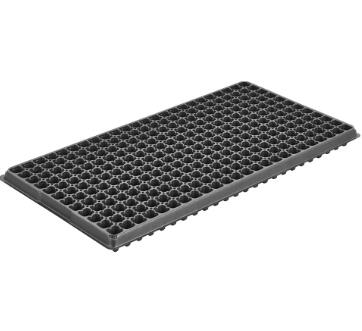How to Wash and Care for Seedling Trays
Seedling trays play a crucial role in the early stages of plant growth, providing a nurturing environment for seeds to germinate and develop into healthy seedlings. To ensure the success of your seedlings, proper care and maintenance of the trays are essential. This article outlines effective techniques for washing and caring for seedling trays, ensuring optimal cleanliness, hygiene, and long-term usability.
Preparing for Washing: Before beginning the washing process, remove any leftover soil, plant debris, or roots from the seedling trays. Use a stiff brush or a scraper to gently dislodge the stubborn remnants. Place the trays in a large tub or sink to contain the water and prevent clogging of drains. Having a dedicated washing area or basin for this purpose can simplify the process.
Soaking and Soapy Water: Fill the tub or sink with warm water and add a mild detergent or dish soap. Soak the seedling trays in the soapy water for 15-30 minutes. This step helps to loosen any remaining dirt and organic matter, making it easier to clean the trays later. Ensure that the trays are fully submerged to allow the water and detergent to penetrate all areas.
Scrubbing and Rinsing: Using a soft brush or sponge, scrub the trays thoroughly, paying attention to the interior and exterior surfaces, as well as the individual cells or compartments. Gently scrubbing helps to remove any stubborn residue and ensures a clean and sanitized surface for the next round of seedlings. Rinse the trays with clean water to remove the soap residue, ensuring that all traces of detergent are thoroughly washed away.

Sanitizing: To maintain optimal hygiene and prevent the spread of diseases, it is important to sanitize the seedling trays periodically. One effective method is to use a diluted bleach solution. Prepare a mixture of one part bleach to ten parts water. Submerge the trays in the solution for a few minutes, ensuring that all surfaces are in contact with the bleach solution. This step helps to disinfect the trays and eliminate any lingering pathogens. After sanitization, rinse the trays thoroughly with clean water to remove any residual bleach.
Drying and Storage: After washing and sanitizing, allow the plant trays to air dry completely before storage or reuse. Place the trays on a clean and dry surface, preferably in a well-ventilated area, ensuring they are not exposed to direct sunlight. Complete drying helps to prevent the growth of mold or bacteria. Once dry, stack the trays neatly to save space and store them in a clean and protected area until their next use.
Maintenance Tips: To prolong the lifespan of your seedling trays, consider the following maintenance tips:
Regularly inspect the trays for any signs of damage or wear. Replace cracked or broken trays to ensure the structural integrity of the compartments.
If possible, avoid using harsh chemicals or abrasive materials during cleaning, as they can deteriorate the quality of the trays over time.
Avoid exposure to extreme temperatures or prolonged sunlight, as these can cause warping or discoloration of the trays.
If you are reusing trays for subsequent seedling cycles, periodically inspect and clean them between uses to prevent the buildup of pathogens or pests.
Conclusion: Proper washing and care of platic seedling trays are essential for maintaining a clean and healthy environment for your seedlings. By following the steps outlined above, you can ensure the cleanliness, hygiene, and longevity of your trays. Regular maintenance and attention to detail will result in optimal conditions for seed germination, robust growth, and successful transplantation. A little effort in caring for your seedling trays goes a long way in fostering healthy and productive plants.



